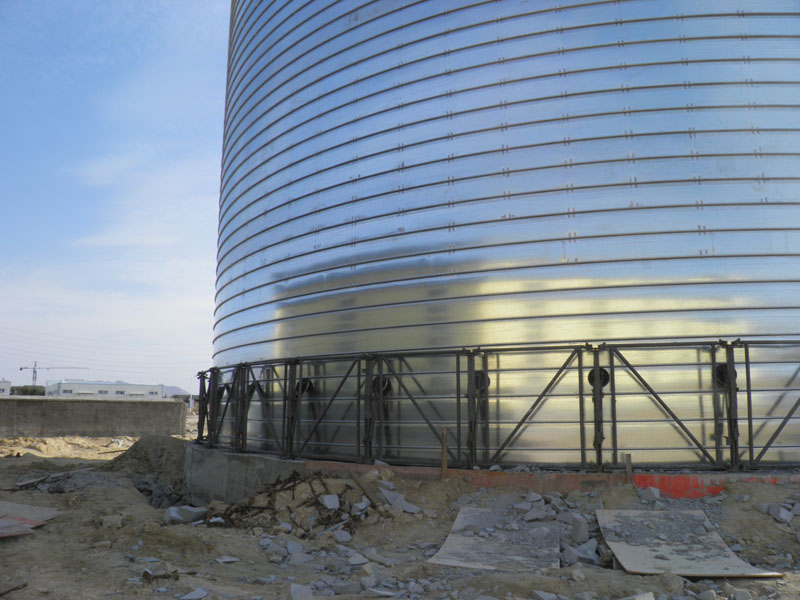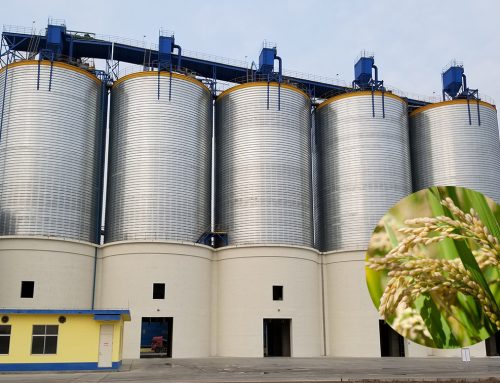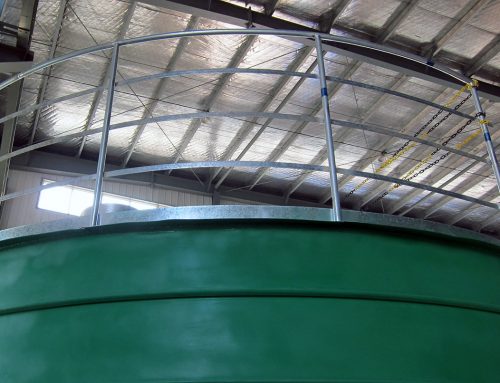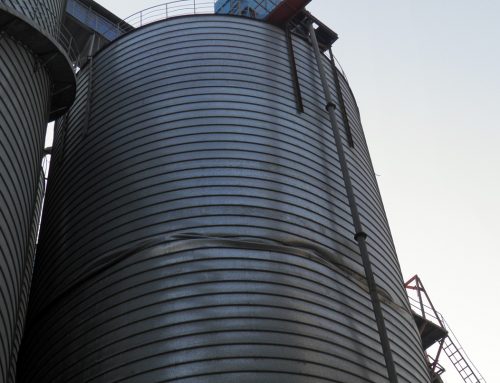I. Steel Tank Settlement Observation
The steel tank is a large steel structure. When it is filled with materials, it will put a lot of pressure on the ground. Therefore, settlement observation is a very important part in the construction and use of steel tanks.
Setting benchmarks:
The benchmarks should be set at least 20 meters away from the steel tank. They should have a good view with the tank, and should be away from obstacles. Setting only one benchmark is acceptable if there is a fixed benchmark for municipal construction measurements in the tank construction area; otherwise, three benchmarks are required to form the observation system.
Setting settlement observation points:
Settlement observation points can use ∅16 steel bar to weld to the steel columns or tank walls (or buried into concrete columns). The number and layout of the observation points should be able to comprehensively reflect the tank’s condition.
Stage settlement observation:
After all the settlement observation points are properly set, the first-stage observation should be made and recorded; after the construction, the second-stage observation should be performed.
All the records of settlement observation must be properly kept well.
II. Steel Tank Loading Test
The design of steel tanks should be based on the height and foundation of the tank, and put forward reasonable load test requirements. The loading test of the tanks refers to the following requirements:
Sequences:
The load test can be divided into 3 stages to 4 stages. At each stage, tank loading should meet the principle of uniformity and symmetry.
Quantity:
When the full load process is divided into 4 stages, the loading capacity of each stage should be 50%, 20%, 20%, and 10% of the tank loading capacity respectively. When it is divided into 3 stages, the loading capacity of each stage should be 60%, 30% and 10%, respectively.
Standing time:
After completion of each loading stage, a certain standing time is required. After the completion of the first and second stages, the standing time should be no less than 1 month, and the standing time after the last stage should be no less than 2 months.
Settlement observation:
The settlement observation points should be recorded before loading test, and be recorded again and again before and after each stage. During the standing time, make a record every 5 days. The operations in next stage should not be performed until the results from all subsidence observation points are in accordance with the following requirements:
1) In the past 10 days, the settlement should not exceed 3mm. Otherwise, the standing time must be extended to ensure the settlement requirements can be satisfied.
2) Due to uneven subsidence, the inclination along the long and wide directions of the structure should not be greater than 2%. Otherwise, it should be corrected by the method of loading control.
3) The sensitive parts of the tanks (upper parts, down parts, doors, windows and holes, connections, etc.) should be observed to find out whether there are abnormal conditions such as unallowable deformations or not. The designated staff should be responsible for observing and recording them.
When all the tanks are fully loaded and the results of the loading test can meet the requirements, we can initiate the unloading process following the reverse order of the loading process.
After the loading test, all the records must be submitted to the design unit to confirm if they can be formally put into use.
III. Matters needing attention when the tank is completed
Once the storage tanks have been put into use, they should be loaded or unloaded based on the principles of balance and homogeneity. Or the tanks may collapse because of long period of side full load. During the first year of use, settlement observation should be performed every 3-6 months to make sure the storage tanks are in good condition.




